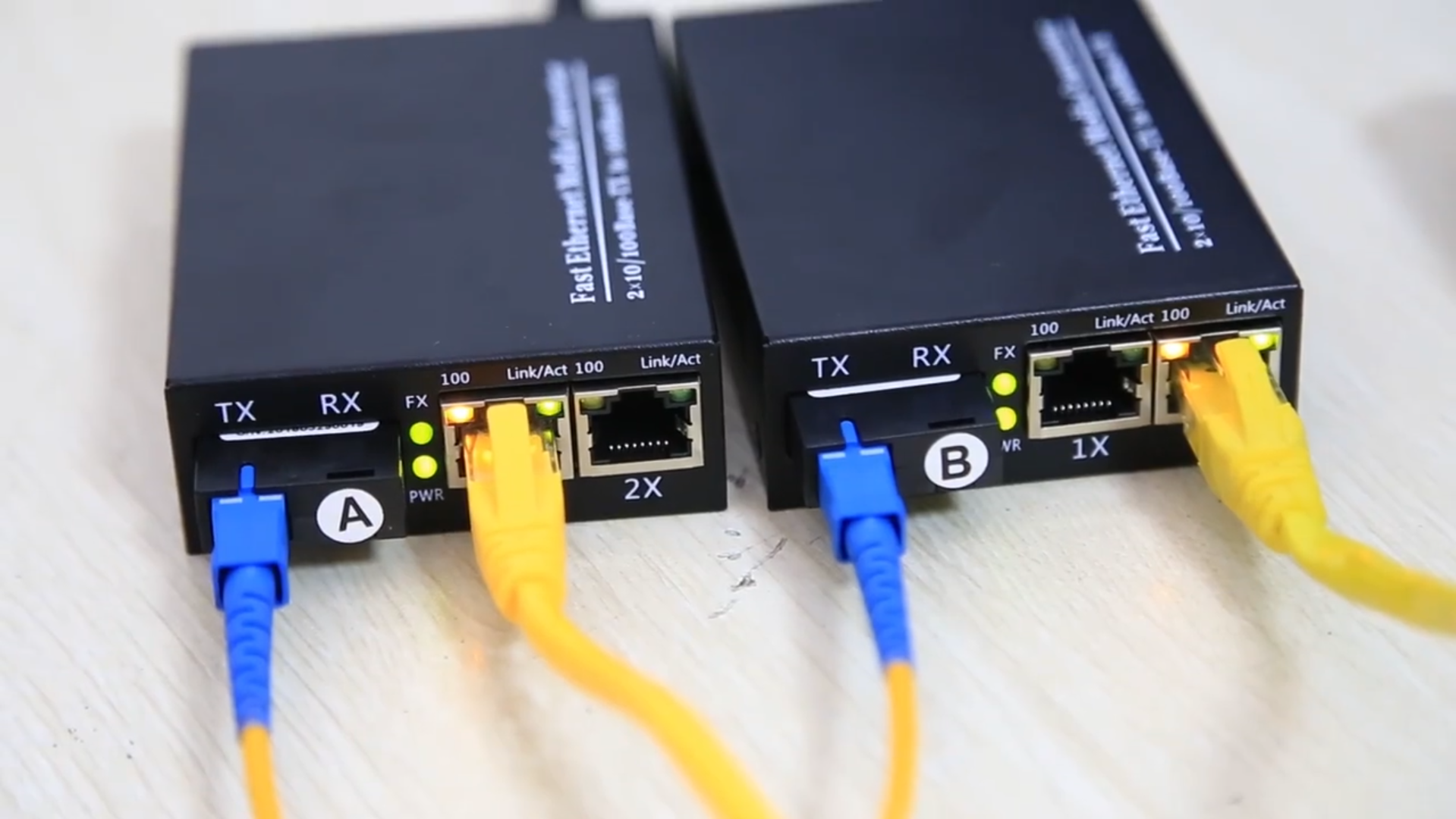Fiber optic transceivers are generally used in the actual network environment where Ethernet cables cannot cover and must use optical fibers to extend the transmission distance. They are usually located at the access layer of broadband metropolitan area networks, and are widely used in various monitoring and safety projects. But we will inevitably encounter some problems in the process of using fiber optic transceivers, so how do we solve it after encountering the problem.
Common failures and solutions of optical fiber transceivers
1. What kind of connection is used when the transceiver RJ45 port is connected to other equipment?
Reason: The RJ45 port of the transceiver is connected to the PC network card (DTE data terminal equipment) using cross-twisted pair, and the HUB or SWITCH (DCE data communication equipment) is used to parallel lines.
2. What is the reason why the TxLink light is off?
Reasons: a. Connect the wrong twisted pair; b. Poor contact between the twisted pair crystal head and the device, or the quality of the twisted pair itself; c. The device is not connected properly.
3. What is the reason why the TxLink light does not blink but stays on after the fiber is properly connected?
Original sound: a. The fault is usually caused by a long transmission distance; b. Compatibility with the network card (connected to the PC).
4. What is the reason why the Fxlink light is off?
Reasons: a. The fiber cable is connected incorrectly. The correct connection method is TX-RX, RX-TX or the fiber mode is wrong; b. The transmission distance is too long or the intermediate loss is too large, exceeding the nominal loss of this product. The solution is : Take measures to reduce the intermediate loss or replace it with a longer transmission distance; c. The operating temperature of the optical fiber transceiver is too high.
5. What is the reason why the Fxlink light does not blink but stays on after the fiber is properly connected?
Cause: This fault is generally caused by the transmission distance being too long or the intermediate loss being too large, exceeding the nominal loss of this product. The solution is to minimize the intermediate loss or replace it with a longer transmission distance transceiver.
6. What should I do if the five lights are all on or the indicator is normal but cannot be transmitted?
Reason: Normally, power off and restart to restore normal.
7. What is the ambient temperature of the transceiver?
Cause: The optical fiber module is greatly affected by the ambient temperature. Although it has a built-in automatic gain circuit, after the temperature exceeds a certain range, the optical power of the optical module is affected and reduced, thereby weakening the quality of the optical network signal and causing packet loss The rate rises, even disconnecting the optical link; (generally the operating temperature of the optical fiber module can reach 70℃)
8. How is the compatibility with the external device agreement?
Reason: 10/100M fiber transceivers have the same frame length restrictions as 10/100M switches, generally no more than 1522B or 1536B. When the switch connected at the central office supports some special protocols (such as Ciss’ ISL) The packet overhead is increased (Ciss ISL packet overhead is 30Bytes), which exceeds the upper limit of the frame length of the fiber transceiver and is discarded by it, reflecting the high or unsuccessful packet loss rate. At this time, the MTU of the terminal device needs to be adjusted In the sending unit, the general IP packet overhead is 18 bytes, and the MTU is 1500 bytes. At present, high-end communication equipment manufacturers have internal network protocols. Generally, a separate packet method is used to increase the IP packet overhead. If the data is 1500 bytes After the IP packet, the size of the IP packet will exceed 18 and be discarded), so that the size of the packet transmitted on the line is satisfactory to the network device’s limit on the frame length. 1522 bytes of packets are added VLANtag.
9. After the chassis has been working for a period of time, why do some cards fail to work properly?
Reason: Early chassis power supply adopts relay mode. Insufficient power supply margin and large line loss are the main problems. After the chassis has been working for a period of time, some cards cannot work normally. When some cards are pulled out, the remaining cards work normally. After the chassis has been working for a long time, the connector oxidation causes a large connector loss. This power supply falls beyond the regulations. The required range may cause the chassis card to be abnormal. High-power Schottky diodes are used to isolate and protect the chassis power switch, improve the form of the connector, and reduce the power supply drop caused by the control circuit and the connector. At the same time, the power redundancy of the power supply is increased, which truly makes the backup power supply convenient and safe, and makes it more suitable for the requirements of long-term uninterrupted work.
10. What functions does the link alarm provide on the transceiver?
Reason: The transceiver has a link alarm function (linkloss). When a fiber is disconnected, it will automatically feed back to the electrical port (that is, the indicator on the electrical port will also go out). If the switch has network management, it will be reflected to the switch immediately. Network management software.






